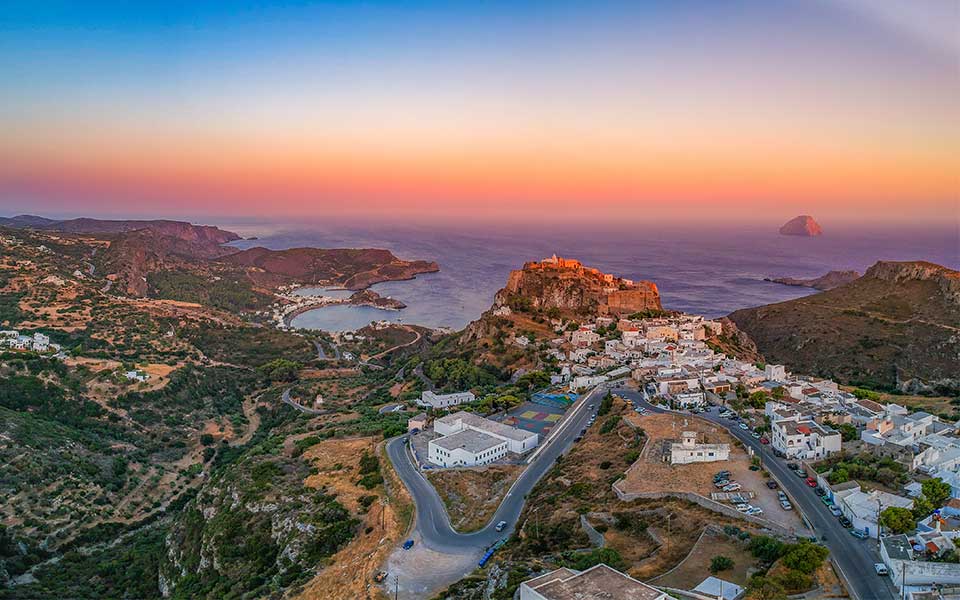From a geopolitical standpoint, Kythira is particularly interesting. Although it lies off the southeastern tip of the Peloponnese, it is counted as one of the Ionian Islands and yet comes under the administrative authority of the Regional Unit of Attica. In other words, its identity is influenced by three different regions.
At first glance, Kythira is clearly Peloponnesian; its landscape, its flora and its beaches are like that of the Peloponnese. However, if you take a closer look, you’ll spot elements typical of the Ionian islands; for instance, many small settlements and villages have toponyms that end in -anika, similar to the islands of Paxi – where toponyms end in -atika – and Kefalonia, where toponyms end in -ata. An aspect of Kythira that it shares with no other part of Greece except its small neighboring island, Antikythira, is the framework that governs public land. A unique public land administration system that has existed since the island was a British protectorate continues to hold sway in Kythira.
According to this system, public land does not belong to the government but rather to what’s known as the island’s “domestic wealth.” In other words, it belongs to the island. This system prevents anyone from attempting any illegal constructions or encroachments on public property, because no one would dare build on land that belongs not in a general and abstract way to Greece but instead to the entire community of Kythira.
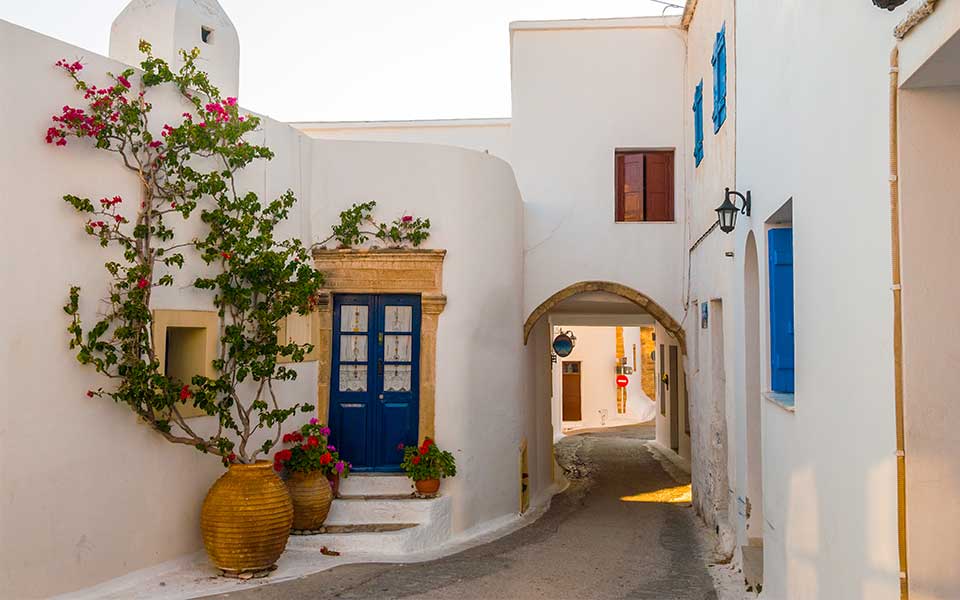
© Shutterstock
Kythira’s undeniable beauty is one of the reasons why the island has attracted dozens of foreign residents – French, British and Italians – as well as many Athenians. Kythirians by choice, these foreigners made the island their permanent home. Many married here, raised their families, opened up businesses and helped revitalize the island, bringing the new ideas and new approaches that Greece’s smaller communities really need.
The foreigners who live permanently live on Kythira, together with the Kythirians who migrated to other countries – primarily Australia – have helped the island establish and maintain stable channels of communication with communities abroad. And all of this, of course, is taking place on an island where the monuments and, in general, the architecture show foreign influences – primarily by the Venetians and the English. Kythira is, at least for visitors, a paradise on earth, enveloped in the beauty of the Mediterranean but with welcome Western European influences.
Kythira’s most notable characteristic is its geography. Divided into north and south (an informal rivalry exists between the northerners and the southerners), Kythira doesn’t have one main city; instead, it has many. The densely constructed Hora with its whitewashed houses will remind you of the Cyclades; the beautiful tourist town of Kapsali is known for its beach, small bars and art shop; the village of Potamou is a prominent settlement, and Diakofti is where the island’s port is located. This quartet of scattered villages, together with the many beautiful beaches that lie all along the island’s coastline, makes the need for motorized transportation all the more compelling. Ideally, it’s best to visit Kythira by car, because travelling around the island by motorcycle or scooter can be tiring.
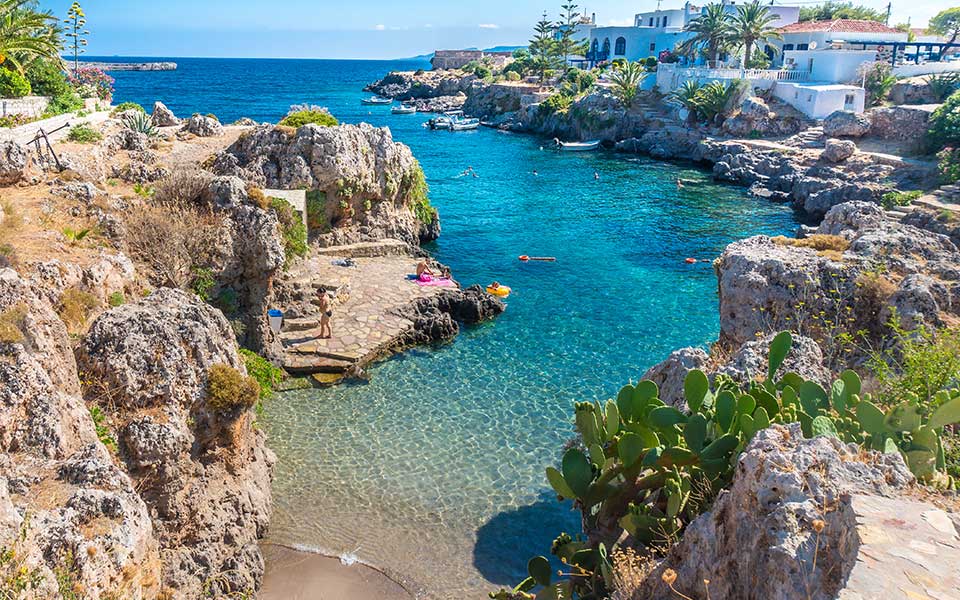
© Shutterstock
SWIMMING
Kapsali is the one-size-fits-all beach; it’s perfect for families and young people, and has many shops right on the sand. To the west of Kapsali, you’ll find Sparagario, a small, naturist-friendly beach with pebbles which is, however, difficult to reach. As far as popular beaches go, the favorite beach among locals and tourists alike is Kaladi, located on the island’s eastern side, with its trademark rock at the tip of the beach. The steps down are a bit tiring, but the beach will enthrall you.
The beaches of Chalkos and Melidoni have an authentic Kythirian beauty (the road to these beaches is rugged; you’ll need to drive slowly). At Diakofti, the colors of sea are truly amazing, even though the beach neighbors the port, while the beach of Avlemona, lying under a Venetian fort, has its own devoted crowd. Fyri Ammos, located south of Kaladi and Kobonada, is notable for its size and can make you feel that you’re on another island.
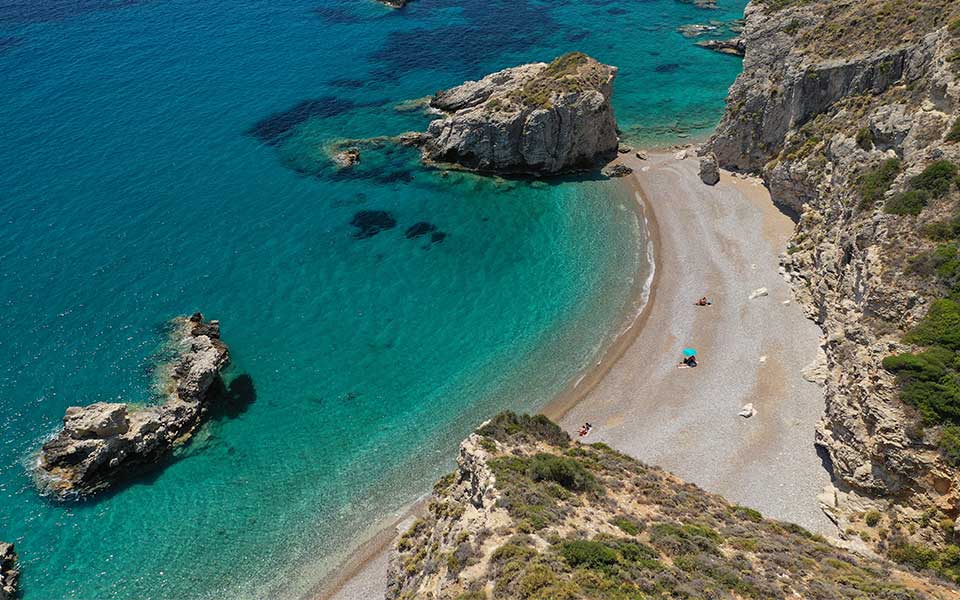
© Shutterstock
THE TASTE OF KYTHIRA
After enjoying Kythira’s beaches and pristine waters, get in your car and lose yourself in the interior of the island (this will probably happen anyway, because digital maps of the area are not very accurate). There’s nothing better to do in Kythira in the faint heat of late afternoon than drive through quaint inland villages, wrapped in an atmosphere so reminiscent of small-town Italy that you’ll feel like an extra in the film “Cinema Paradiso”. In some of these villages, as well as on the beachfronts, you’ll find exceptional restaurants, small tavernas and grill houses that have kept the island’s gastronomic heritage alive. In Kythira, you can enjoy fine dishes that range from the simple to the unique.
Try the ladotyri (a local cheese), the tiganopsomo (fried bread stuffed with feta cheese) or the diples (a Greek dessert made of thinly rolled sheet-like dough fried and dipped in syrup), or help yourself to eggplant with Kythirian xinochondros (milled wheat with fermented milk); snail stew; local sausages; rooster; red mullet; lobster; or kakkavia (a Greek fish soup). Kythirians are well-versed in the kitchen; even a simple souvlaki is made exceptionally well here.
As far as spirits are concerned, the local beverage is fatourada, a liqueur made with tsipouro, or pomace brandy, and herbs. You can also find a host of products that make ideal gifts, such as herbs, marmalades, rozedes (an almond pastry that is served at weddings), packaged sea salt, organic oil and exceptional rusks, including traditional ladopaximado (rusks made with wheat flour and olive oil), kritharokouloures (barley rusks) and carob rusks with anise, honey and almonds.
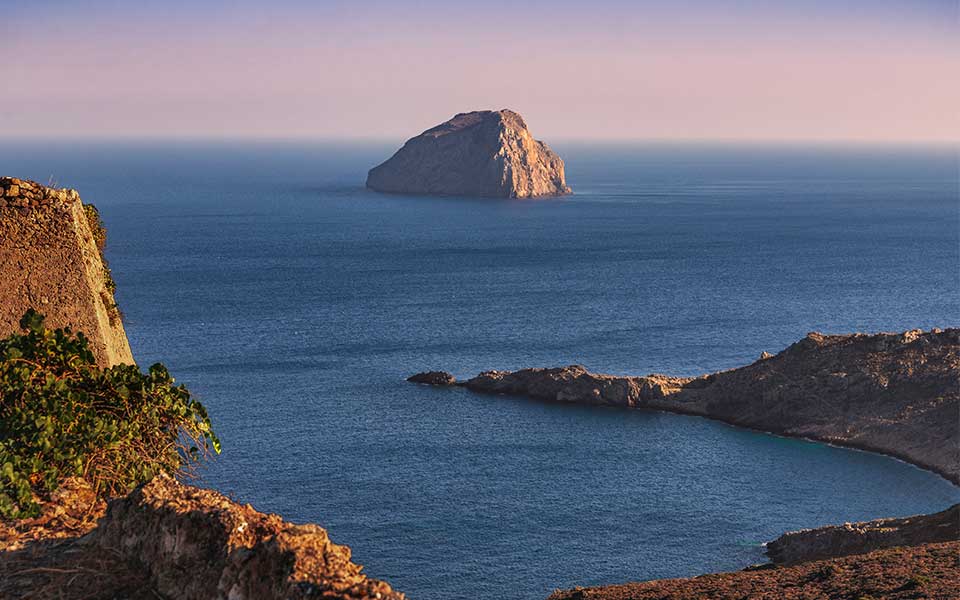
© Shutterstock
THE MUSEUM AND THE EGG
Don’t leave Kythira without visiting two places that, while being quite different from each other, offer equally memorable experiences. The first is the Archaeological Museum of Kythira, on the provincial road at the edge of Hora. This small museum proves how important it is to have a vision when setting up a cultural center. With exhibits dating between the 9th century BC and the 3rd century AD – figurines, jewelry, coins, vases, the marble lion of Kythira and findings from excavations in Antikythira – augmented by multimedia resources and a great deal of storytelling, the Archaeological Museum of Kythira is more than just an under-appreciated museum in a vacation destination. Modern and interesting, the museum is a model for a generation of new local museums that showcase the region’s cultural heritage.
The second experience is not related to culture, but rather to nature. Off the south coast of Kythira lies a small uninhabited islet named Chytra (or Avgo), where the rare yellow flower sempreviva grows and seals find refuge. If you’re interested in exploring this rocky island, Captain Spyros in Kapsali provides boat tours of the island’s unspoiled waters.

